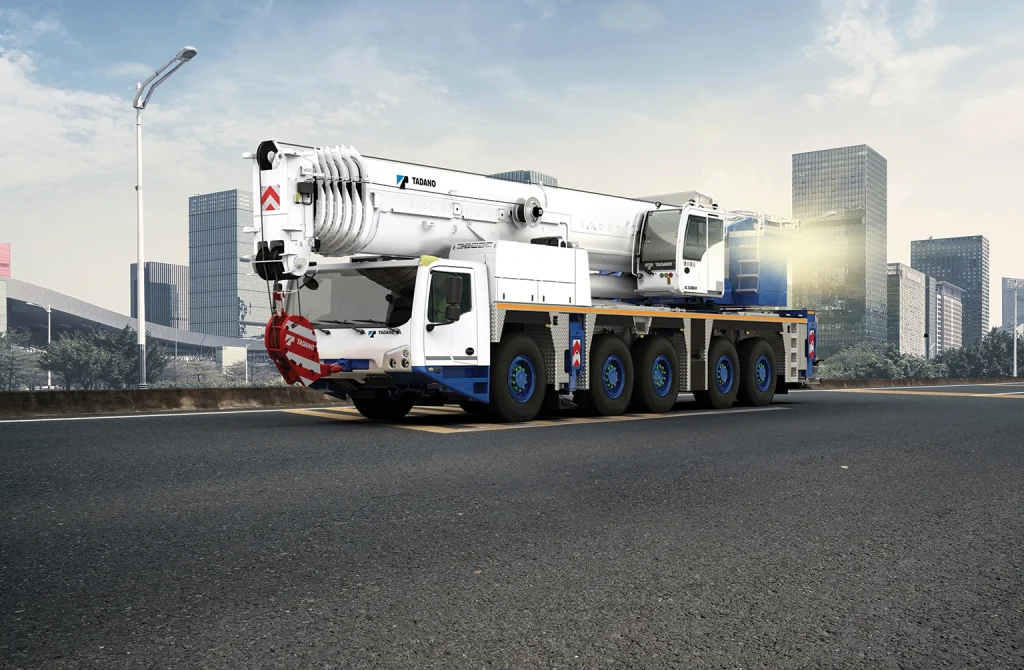New projects coming on-stream has resulted in strong demand for mobile cranes from top manufacturers, while the latest models and technological advancements are helping improve performance and safety on job sites across the Middle East.
With major national projects underway and planned across the Middle East in 2024, including infrastructure developments, urban expansions, and commercial ventures, Yasuaki Kishimoto, CEO & President of Tadano Middle East is anticipating robust demand for construction machinery and equipment.
“[We see] significant growth opportunities for Tadano and Tadano cranes in the Middle East market,” Kishimoto told Plant & Equipment. “As the region continues to prioritize economic diversification and infrastructure enhancements, we foresee sustained momentum in construction activities.”
Kishimoto’s bullish outlook may seem logical in light of Tadano’s 2023 sales performance in the Middle East, which saw net sales of 1,840 units (comprising 790 truck cranes, 680 rough terrain cranes and 460 all terrain cranes), compared with 910 units in 2022. That meant sales growth above 100%. (Parent company Tadano Ltd is one of the few manufacturers to publish a granular breakdown of sales figures for the Middle East region.)
Key factors driving sales growth were commitment to delivering top-notch quality and prioritizing safety in Tadano products, which has garnered immense trust and loyalty from its customers, says Kishimoto. “The reliability and durability of our cranes have been acknowledged as paramount in meeting the rigorous demands of construction projects in the region.”
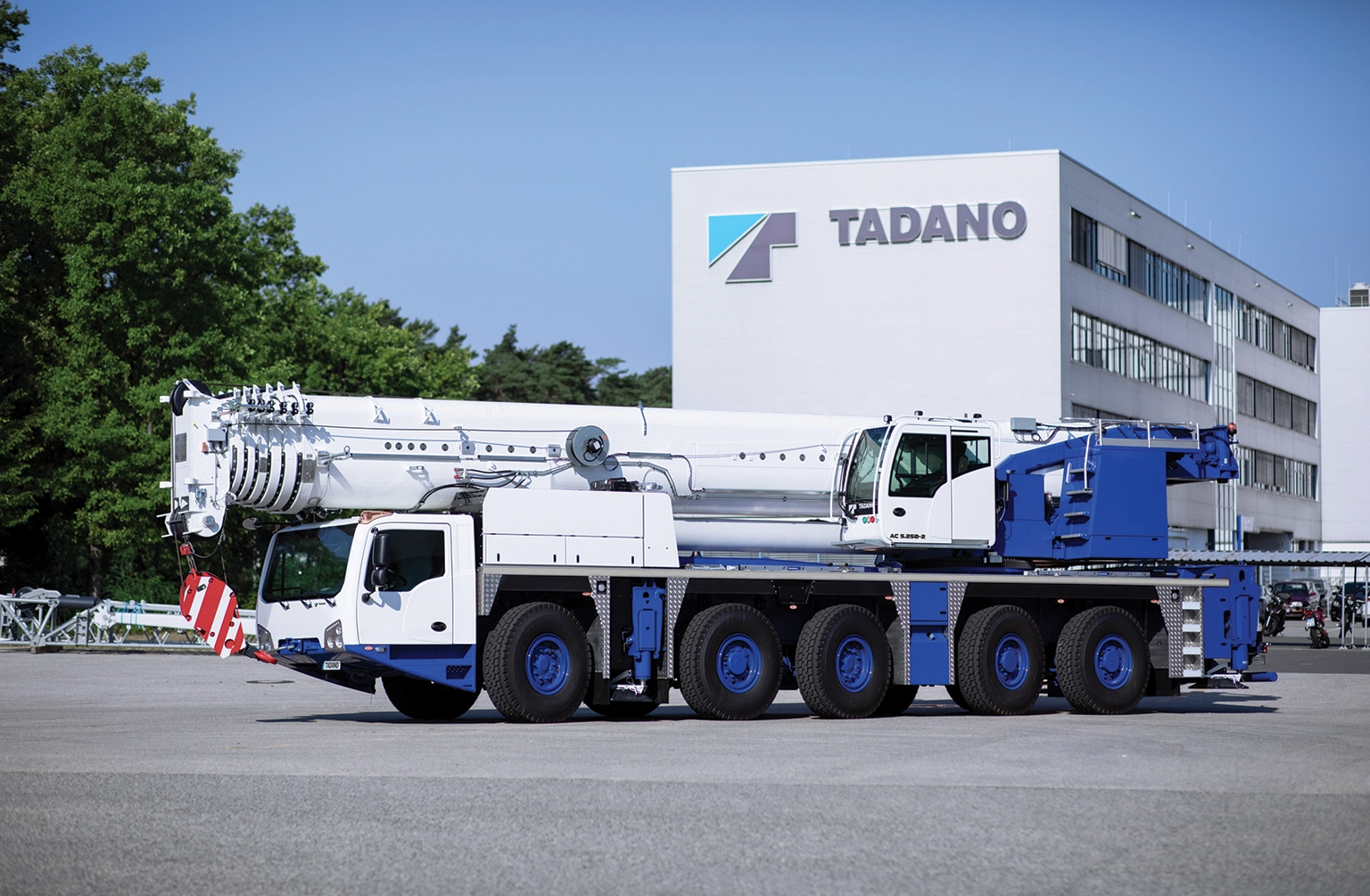
The robust service support and efficient parts supply system maintained by Tadano distributors has also helped ensure uninterrupted operations for customers. “[This] further enhances customer confidence in our brand,” he says.
Across the Tadano mobile crane range, its rough terrain (RT) cranes are a customer favourite, notes Kishimoto. “Renowned for their robust lifting capabilities, [our RT cranes] excel in tackling the demanding terrain conditions often encountered in construction projects across the region,” he says.
Safety features help ensure secure operations even in challenging environments. “The emphasis on high-quality construction translates to minimal downtime for our customers, a critical factor in meeting project deadlines and maintaining operational efficiency,” says Kishimoto.
In the all terrain crane range, Tadano’s new AC 5.250-2 boasts a lifting capacity up to 30% higher than previous best values in this class. “The new AC 5.250-2 is expected to greatly appeal to customers in the Middle East region due to its groundbreaking features tailored to meet the demands of the market,” says Kishimoto. “This model is designed with a primary focus on enhancing lifting capacity while ensuring ease of transportation, a critical aspect in the Middle East where construction projects often span vast areas with varying terrain challenges.” Likely applications include erecting tower cranes, lifting heavy machinery, or facilitating large-scale construction projects.
In-roads into KSA
Another manufacturer that delivered the goods in 2023 was Liebherr. A flurry of news stories on the German manufacturer’s website suggesting it has made strong in-roads into the market in Saudi Arabia.
“Demand for mobile cranes in the KSA market has increased significantly over the last three years and is expected to increase further,” observes Marius Kleck, Area Sales Manager – Middle East & Central Africa.
Liebherr machines are designed to perform in global markets, he says. “In the Middle East region and also in KSA, there are certain features that make the machine more attractive and suitable for the market like for example emergency operation of the crane hydraulics to only name one feature.”
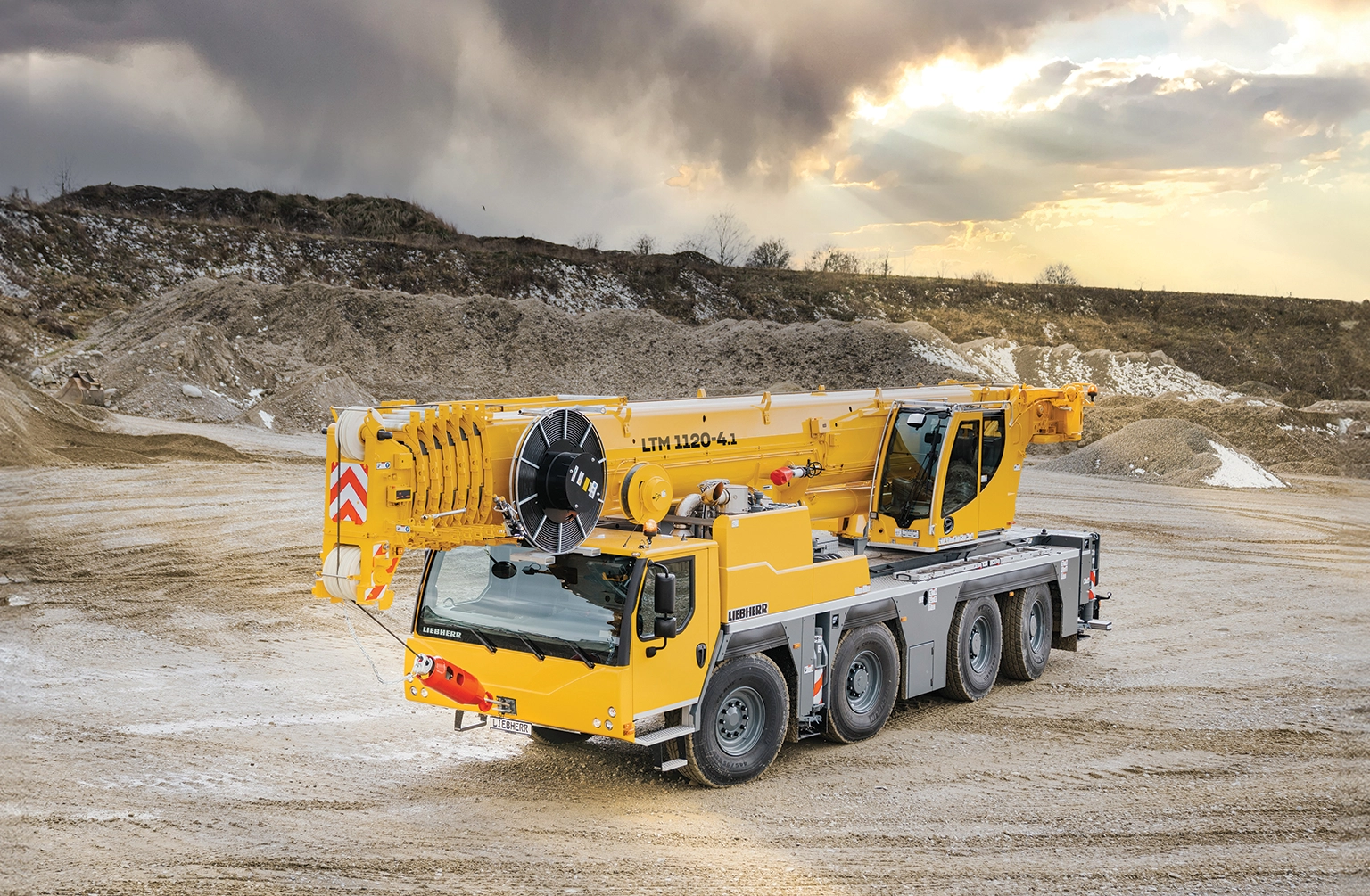
Liebherr customers also expect the highest level of quality from its products as well as reliable and competent performance of the after-sales service, notes Kleck.
With the two main customer segments being rental companies and owner-operators, Kleck says that while there is some variation in operating requirements between these groups, ultimately every customer operates in their own way. “The configuration of the cranes is of course variable and can be customised to the customer’s needs. In addition, our customers are generally convinced and satisfied with our after-sales service which ensures minimum downtime. It can be said that all customers expect a high-quality, safe and reliable product from Liebherr.”
Kleck is looking forward to continued growth this year. “The demand for mobile cranes in the Middle East is currently at a very high level across almost all countries and will most likely continue to rise this year and beyond.” Particular bright spots are Saudi Arabia, Qatar and the UAE, says Kleck.
Liebherr’s range of all terrain cranes is a particular strength. “In general, almost all of our all terrain cranes from 3-4 axles upwards to 9-axles are very popular in the Middle Eastern markets,” notes Kleck.
One standout model is the LTM 1120-4.1. Highlights are a 66 metre telescopic boom combined with a four-axle chassis, which makes the LTM 1120-4.1 a compact crane with the longest boom in its class. “In addition to the longest boom, this crane also impresses with the highest lifting capacities in this class compared to the competition,” points out Kleck.
Safety is obviously the first consideration in any lifting operation, and topflight OEMs are able to offer highly sophisticated systems. In the case of the LTM 1120-4.1, safety features include VarioBase, emergency operation, remote control and monitoring of almost all movements.

Digital control systems are an increasingly important aspect of a crane. While at their most basic they should streamline jobs and help operators plan and carry out a safe lift, in the more advanced use cases they allow cranes to be used more effectively in certain situations.
For example, Liebherr’s VarioBase (variable base crane support) enables safe working in confined spaces when not all outriggers can be fully extended, as the LICCON crane control system monitors the entire 360-degree working area, explains Kleck. Additionally, especially when working directly in the direction of an outrigger, VarioBase offers higher lifting capacities. “For this reason, VarioBase is of global interest and great benefit to all crane users.”
Tadano offers a variety of control systems, including IC-1 Plus, AML-E and AML-F, which Kishimoto describes as “paramount in the mobile crane market for their precision, safety, and efficiency benefits.” Having access to real-time data empowers operators, enhancing productivity while mitigating risks. “Tadano’s integration of these technologies sets our cranes apart, ensuring optimal performance and safety,” says Kishimoto.
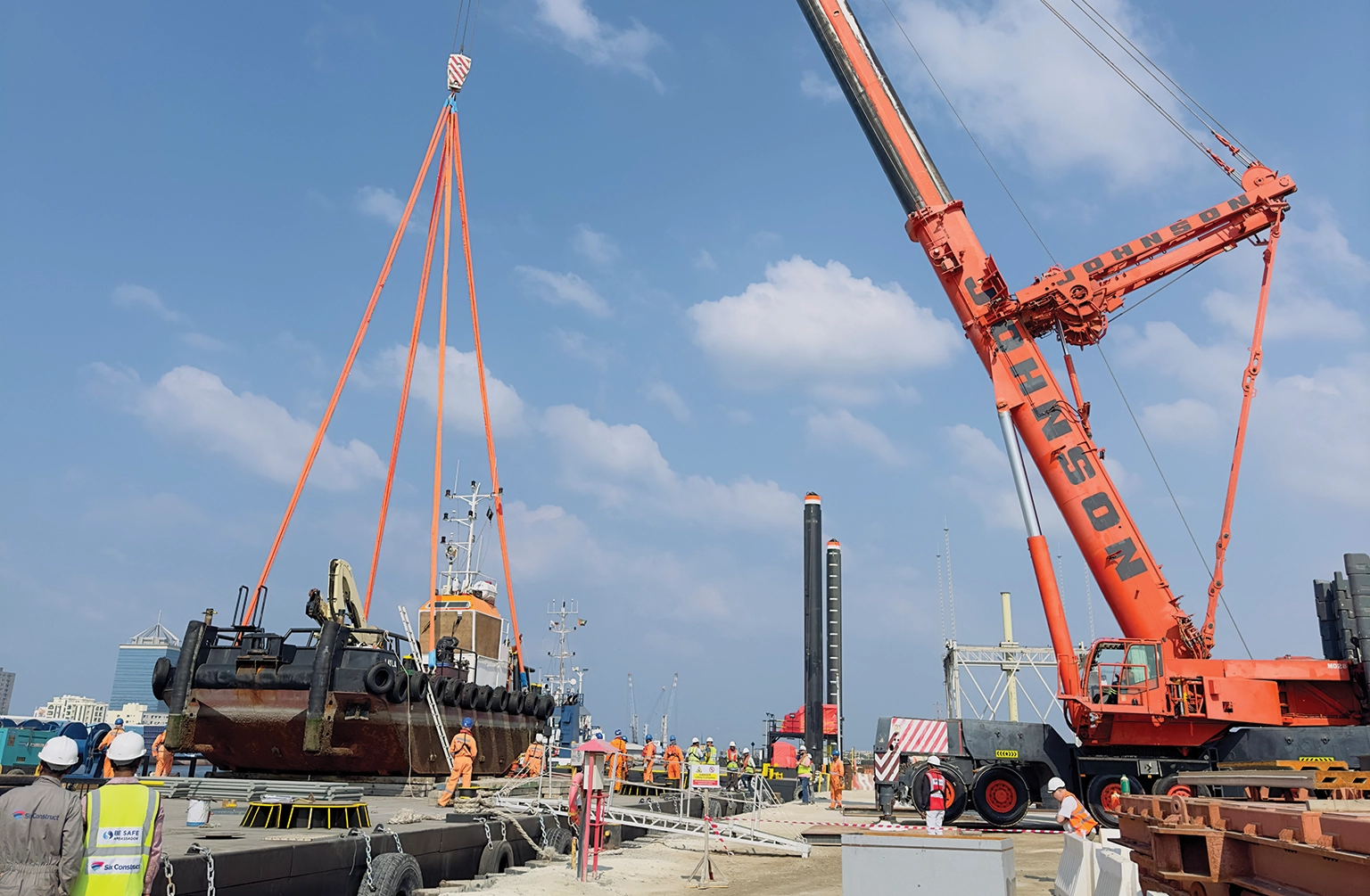
A Swing to Rentals?
Headquartered in Dubai, Johnson Arabia has operated as a lifting solutions provider in the UAE market for more than 20 years. Its fleet comprises roughly 250 cranes, in different capacities up to around 700 tonnes, with operations across the GCC, including a branch in Muscat, Oman.
“Our experienced engineering team has the ability to provide the best lifting and engineered solutions to the customers, and most importantly ensure the safety and the quality of these operations. We have a diversified fleet that can meet our customer requirements and fulfil their lifting needs very effectively,” says Mohammad Fareed Naser – Executive Manager and Regional Head of Crane Operations.
Reflecting on the market conditions, Naser says that the market has seen something of an uplift, while the longer term outlook is also positive, with the UAE construction market estimated to reach $50.4 billion by 2029, up from $41 billion in 2024. “We have witnessed an increasing demand on cranes from the last quarter of 2023 which has positively impacted the rental rates as well as liquidity.”
Whereas traditionally contractors prefer to own construction equipment, when it comes to heavy equipment such as cranes, which require large capex investments and expertise to operate, rental options look more attractive.
Additionally, Naser says that since Covid, renting of lifting equipment has become the preferred option. “I have seen some major companies reducing their plant and equipment [fleets], and depending more on rental for their lifting needs. This helps them reduce their overhead costs and lessens the pressure on their cash flow, allowing them to utilise capex in other areas.”
Apart from the capital costs, the lifting industry also has a very high demand on safety, skills, planning and expertise – another reason why contractors prefer to partner with an experienced rental company like Johnson Arabia, says Nasser.
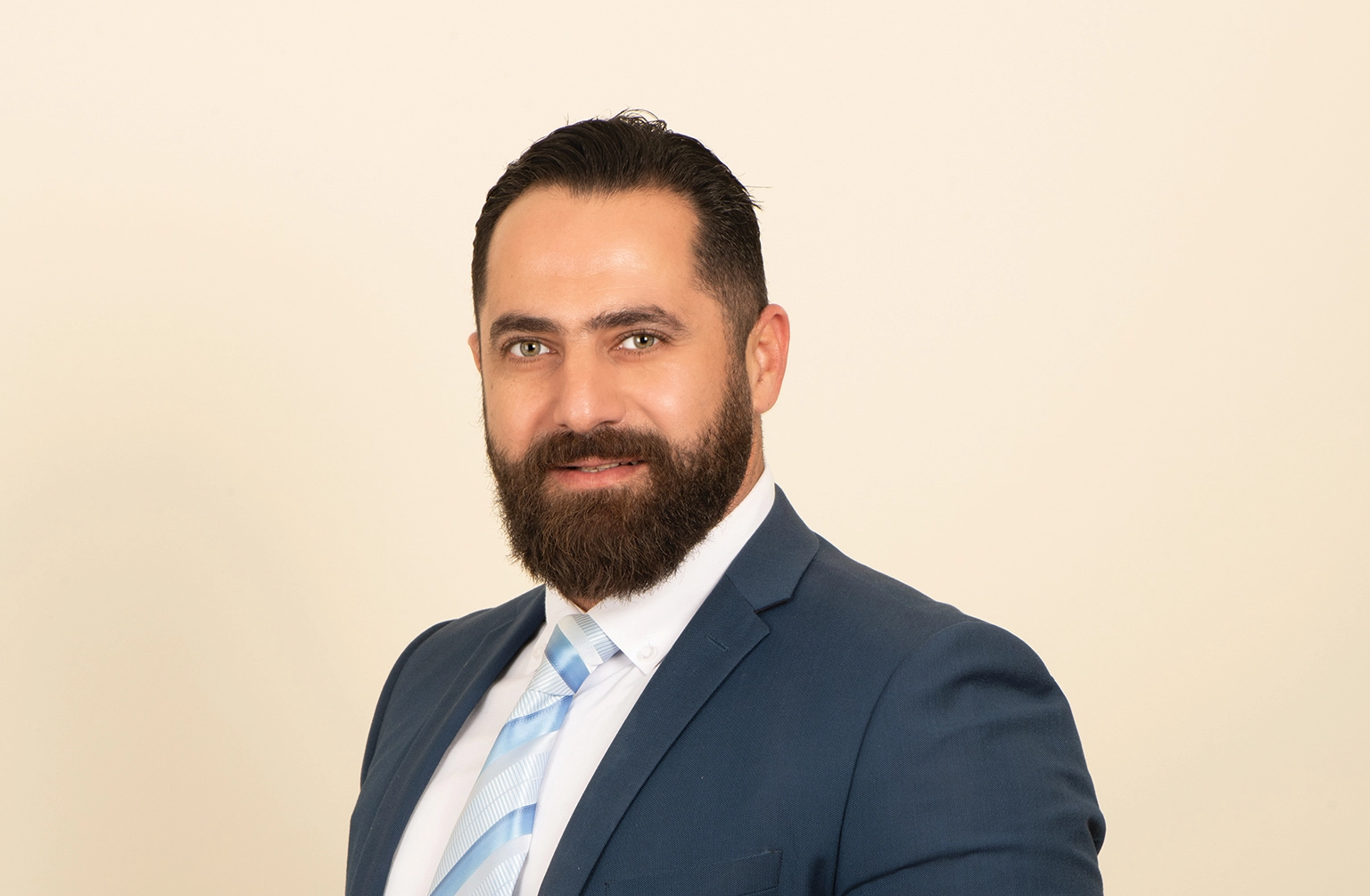
Commenting on his company’s approach, Nasser says it’s mandatory to perform site inspections before providing any cranes, “to ensure that we give the most safe and best economic solution to our clients.”
Their large fleet size also comes into play. “Our wide range of equipment gives us the edge over our competitors, to serve our customer in the best possible manner.”
Having skilled operators is a key aspect of any lifting operation, but also another reason why electing for a rental company can ensure good results. Nasser says that as part of the company’s continuous improvement plan, not only is Johnson Arabia renewing its crane fleet, it’s also enhancing its teams’ and cranes operators’ capabilities.
“We believe that the crane operators are very essential in the entire service process. They are key drivers in the safety of operation and hence we keep our operators up to date with the latest technology and we periodically provide them with all the required safety and technical trainings that arise,” concludes Naser.

